ASUS ROG Rampage Formula: Why we were wrong about the Intel X48
by Kris Boughton on January 25, 2008 4:30 AM EST- Posted in
- Motherboards
Real-World Results: What Does a Lower tRD Really Provide?
Up until this point we have spent a lot of time writing about the "performance improvement" available by changing just tRD. First, let's define the gain: lower tRD settings result in lower associated TRD values (at equivalent FSB clocks), which allow for a lower memory read latency time, ultimately providing a higher memory read speed (MB/s). Exactly how a system tends to respond to this increase in available bandwidth remains to be seen, as this is largely dependent on just how sensitive the application/game/benchmark is to variations in memory subsystem performance. It stands to reason that more bandwidth and lower latencies cannot possibly be a bad thing, and we have yet to encounter a situation in which any improvement (i.e. decrease) in tRD has ever resulted in lower observed performance.
EVEREST - a popular diagnostics, basic benchmarking, and system reporting program - gives us a means for quantifying the change in memory read rates experienced when directly altering tRD though the use of its "Cache & Memory Benchmark" tool. We have collected these results and present them below for your examination. The essential point to remember when reviewing these figures is that all of this data was collected using memory speeds and settings well within the realm of normal achievement - an FSB of 400MHz using a 5:4 divider for DDR2-1000 with 4-4-4-10 primary timings at a Command Rate of 2N. The only change made between data collection runs was a modification to tRD.
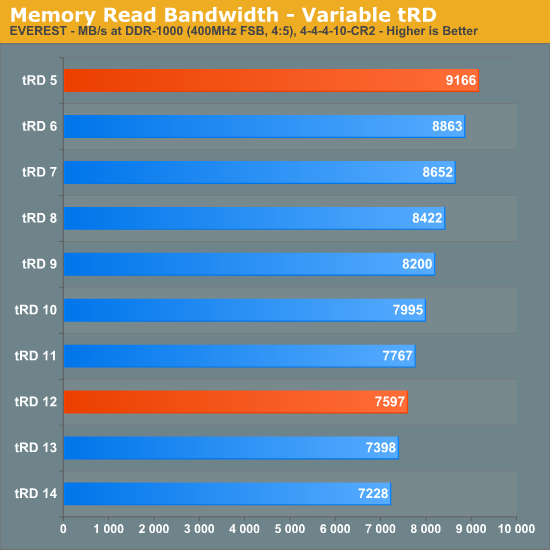
Using the default tRD of 12, our system was able to reach a maximum memory read bandwidth value of 7,597 MB/s - a predictable result considering the rather relaxed configuration. Tightening tRD all the way to a setting of 5 provides us with dramatically different results: 9,166 MB/s, more than 20% higher total throughput! Keep in mind that this was done completely independent of any memory setting adjustment. There is a central tenet of this outcome: because the MCH is solely responsible for delivering the additional performance gains, this concept can be applied to any system, regardless of memory type or quality.
The next graph shows how memory access (read) latency changes with each tRD setting. As we can see, the values march steadily down as we continue to lower tRD. We can also note that the change in latency between any two successive steps is always about 2.5ns, the Tcycle value for 400MHz FSB and the expected equivalent change in TRD for a drop in tRD of one. No other single memory-related performance setting has the potential to influence a reduction in read latency of this magnitude, not even the primary memory timings, making tRD unique in this respect. For this reason, tRD is truly the key to unlocking hidden memory performance, much more so than the primary memory timings traditionally associated with latencies.
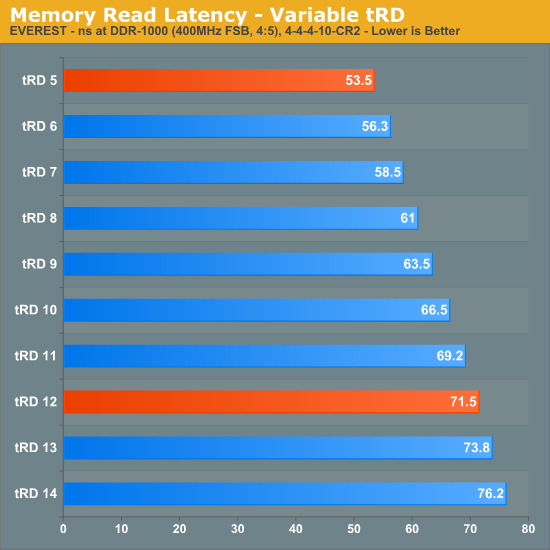
We realized our best performance by pushing the MCH well beyond its specified range of operation. Not only were we able overclock the controller to 450MHz FSB but we also managed to maintain a tRD of 5 (for a TRD of about 11.1ns) at this exceptional bus speed. Using the 3:2 divider and loosening the primary memory timings to 5-5-5-12 allowed us to capture some of the best DDR2 memory bandwidth benchmarks attainable on an Intel platform. As expected, our choice of tRD plays a crucial role in enabling these exceptional results. Screenshots from EVEREST show just how big a difference tRD can make - we have included shots using tRD values of 7, 6, and 5.
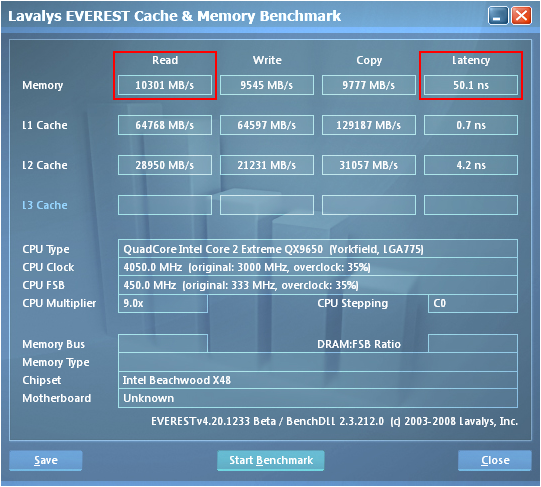
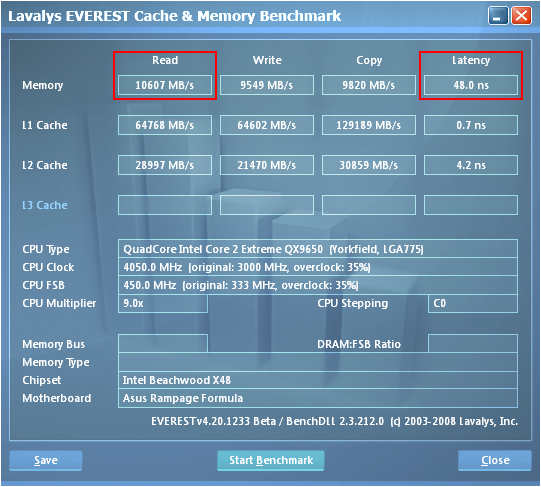
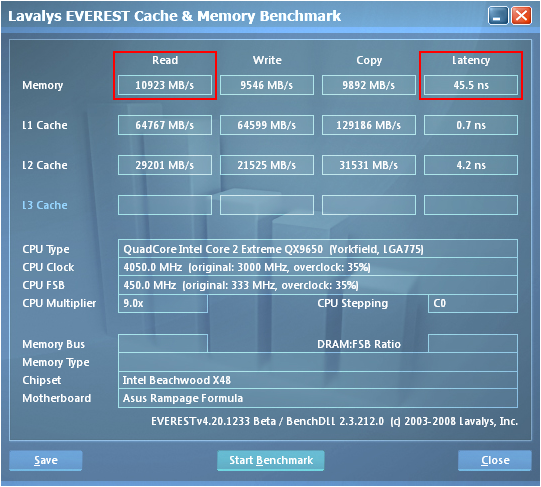
A considerable share of the memory read performance advantage that AMD-based systems have over Intel-based systems can be directly attributed to the lower memory latency times made possible by the design of the AMD processor's on-die memory controller. So far we have done a lot to show you why reducing TRD to a lower level can make such a positive impact on performance; knowing this you might tend to believe that the optimal value would be about zero, and you would be right. Eliminating the latency associated with the MCH Read Delay would further reduce total system memory read latency by another 12.5ns (as modeled by the results above).
Given this, Intel-based systems would perform memory read operations about on par with the last generation AMD-based systems. Although not the only reason, this is one of the main motivations behind Intel's decision to finally migrate to a direct point-to-point bus interface not unlike that which has been historically attributed to AMD. Removing the middleman in each memory access operation will do wonders for performance when Intel's next step in 45nm process technology, codenamed Nehalem, hits the shelves in ~Q4'08. Until then we'll have to try to do the best with what we've got.










73 Comments
View All Comments
xieper - Saturday, August 22, 2009 - link
Did that article ever materialise? I have not been able to find it anywhere on this site....papatsonis - Sunday, May 16, 2010 - link
way too late for this.. (cause i actually calculate the allowable tRDs "on the fly") but may be useful for some, this little excel which calculates the minimum allowable tRDhttp://rapidshare.com/files/388032472/DDR2_tRD_Cal...
papatsonis - Sunday, May 16, 2010 - link
some small changes/additionshttp://rapidshare.com/files/388191811/DDR2_tRD_Cal...